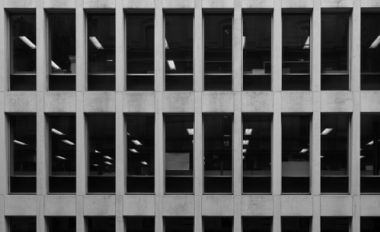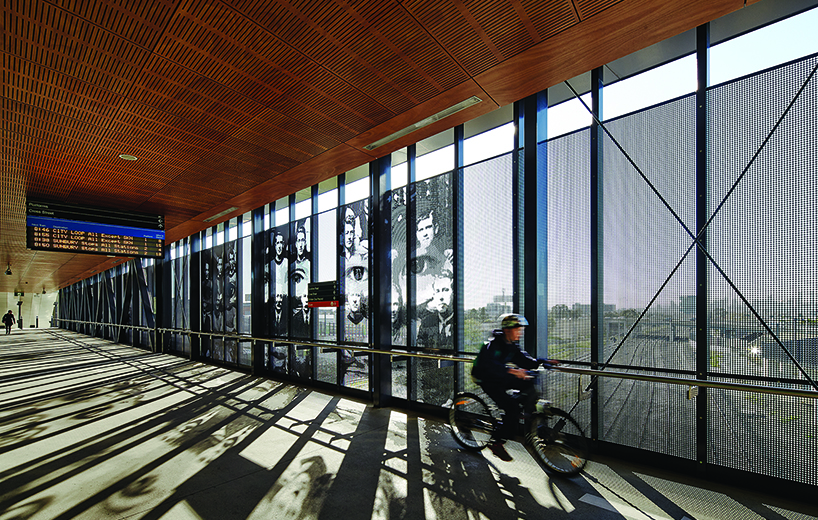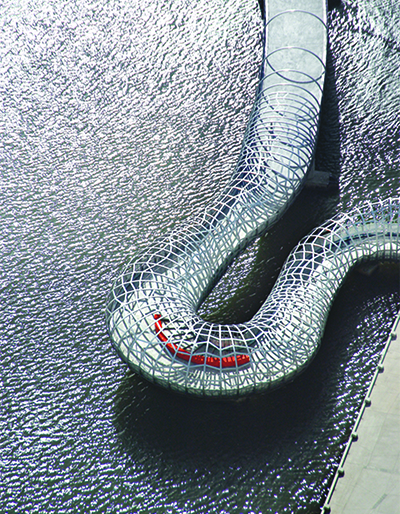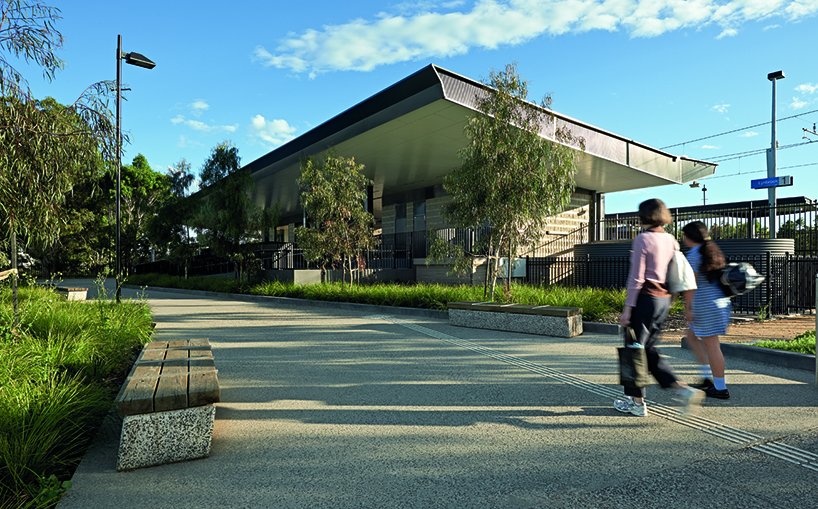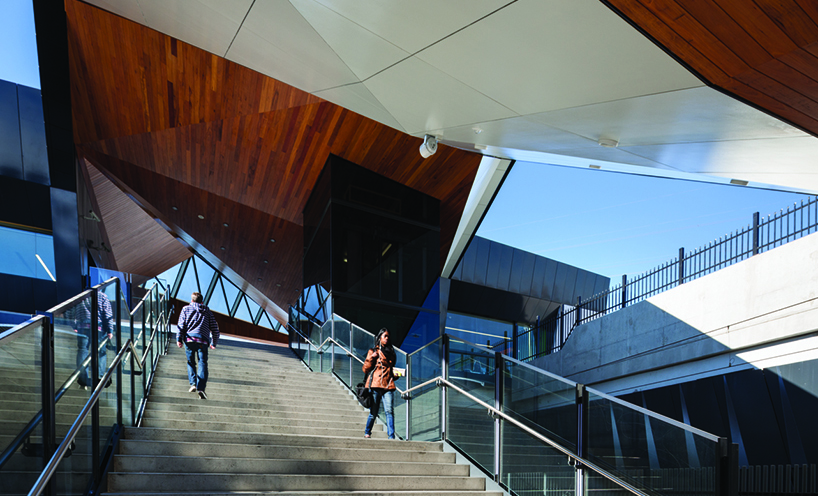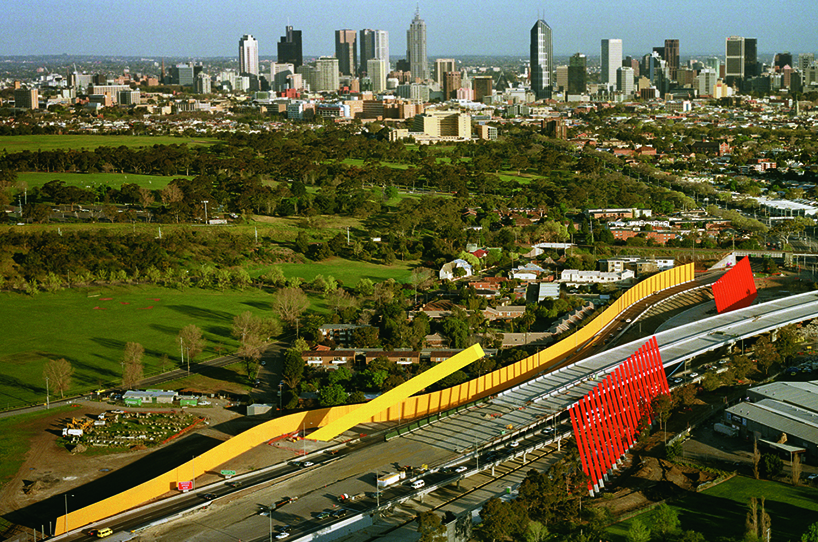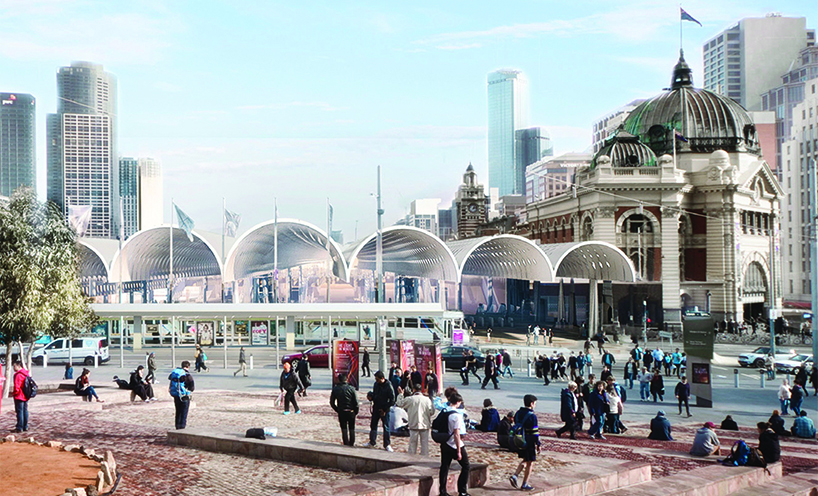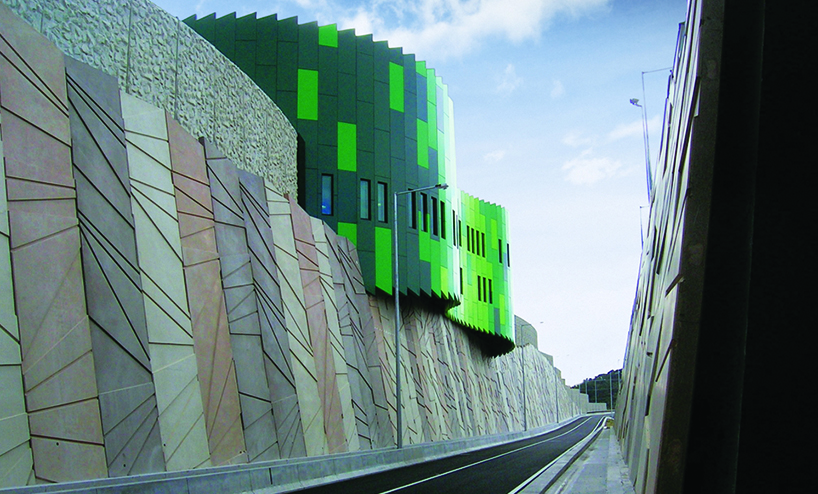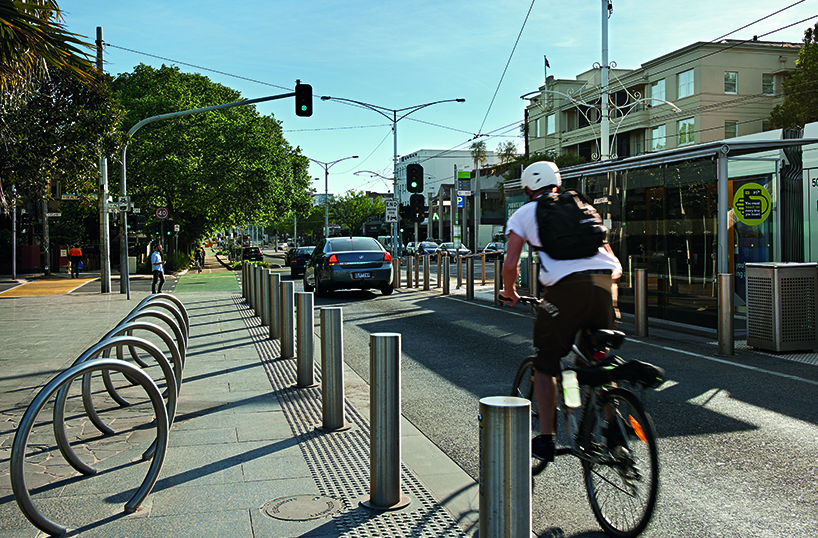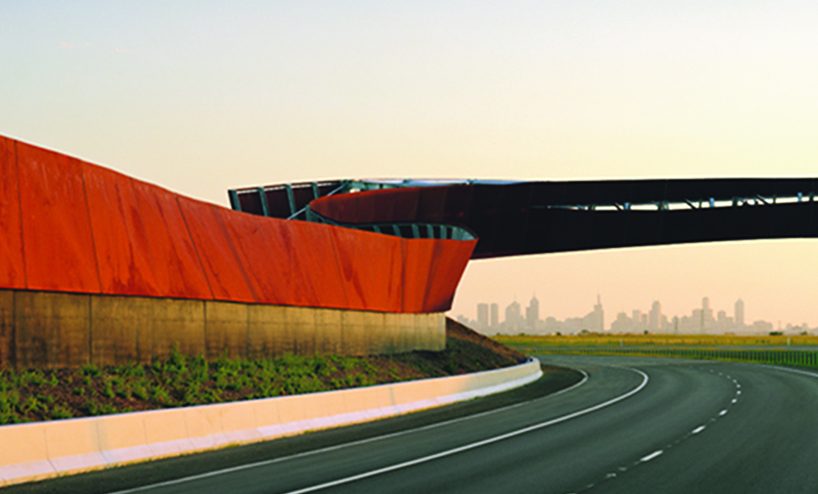You can download Good Design + Transport here or find the full text below.
The Office of the Victorian Government Architect (OVGA) provides leadership and strategic advice to government in relation to architecture and urban design. OVGA recognises that transport infrastructure is an essential part of cities and regions.
Transport has a significant impact on the built environment, contributing enormously to its quality as well as improving productivity and connectivity. Well designed transport facilities, interchanges and connections add value to public places and can contribute to our well-being, health, productivity and the way we engage with our communities. Good design creates economically, socially and environmentally sustainable transport that serves our needs and enriches our cultural identity.
This publication is one of a series that aims to raise awareness of good design and promote discussion supporting its benefits and value. The focus of this publication is the integrated design of transport infrastructure including pedestrian and bicycle paths, tram, train and bus stations; resolving issues of conflict between road and rail; and creating public transport interchanges and hubs.
Its intent is to highlight how good design can contribute to successful, safe and efficient travel; enhance function and ease of operation; improve and add value to the precincts in which facilities are situated; and produce exceptional projects.
The publication has been developed together by OVGA with associated transport agencies within the Department of Economic Development, Jobs, Transport and Resources (DEDJTR). It provides key design principles and outlines some effective approaches for achieving good integrated design. The primary audience includes those working on transport infrastructure projects in State Government departments and in local government.
A civic legacy
Victoria has a proud heritage of outstanding, well-designed transport projects. Princes Bridge and Flinders Street Station, both constructed over a century ago, are cultural and visual landmarks as well as vital pieces of the city’s infrastructure. The grand boulevards of Victoria Parade, Royal Parade and St Kilda Road are delightful tree-lined thoroughfares shared by pedestrians, cyclists, cars and trams and have become synonymous with Melbourne. Pall Mall in Bendigo, the Sale Swing Bridge and Avenues of Honour throughout the State are cherished places designed with distinction and purpose.
More recently, projects such as the Charles Grimes Bridge and Webb Bridge in Docklands, East Link, Barwon Heads Pedestrian Bridge, and the Geelong and Craigieburn Bypasses have integrated the disciplines of engineering, architecture, landscape architecture and public art, resulting in functional and memorable places. The Melbourne International Gateway sculpture is a striking entrance to the city. Southern Cross Station is a major civic structure, which has transformed the western end of the city, offering vastly improved civic amenity and a new architectural landmark for Victoria. The South Morang Rail Extension has contributed a civic identity to its local communities while stations such as Cardinia Road and Lynbrook have established key connections for future development in their respective precincts.
Public transport patronage has increased by 37 % since 2006
The Victorian Transport Integration Act
As our population increases, Victoria will increasingly depend on a well-linked travel network with integrated development around transport hubs. The Victorian Transport Integration Act 2010 creates a new framework that “recognises the aspirations of Victorians for an integrated and sustainable transport system that contributes to an inclusive, prosperous and environmentally responsible State”.
The adoption of principles and processes that support the integration of good design will assist agencies in meeting the requirements of the Act.
They will ensure that new transport infrastructure is not only efficient but will provide safe, comfortable and socially inclusive places that help enhance identity and create great public spaces. Department of Economic Development, Jobs, Transport and Resources and its agencies are working across all levels of policy and implementation to ensure greater integration and co-ordination between land uses, development opportunities and transport design and delivery.
Why good design?
Good design brings comprehensive public benefits by integrating transport-specific requirements with broader objectives, such as strengthening our cultural identity, levering high quality urban renewal and economic development, creating highly regarded public spaces and increasing public access to transport, that is inclusive and seamless.
Good design is just as applicable for the small, local projects that are used daily, as it is for large, central projects. Local projects strengthen community linkages, and provide essential pathways to services.
Good design has the ability to positively transform how people feel and behave. In the case of transport infrastructure, it can increase patronage by providing places which feel safe and comfortable, are accessible and easy to use, connected to other community facilities and are great places to be. Well designed places also tend to be better respected and cared for, with lower incidences of vandalism and graffiti. Great public structures and places can delight us and raise our spirits.
In managing our public transport we are committed to providing well designed, functional and cost effective solutions for all Victorians. Good design in transport can improve mobility, productivity and quality of life, now and for the future.
What to do
Excellent projects are achieved when design quality is recognised, valued and implemented as a central goal.
This recognition includes: setting high expectations within the project team; good integration and collaboration across disciplines; utilising skills to identify and nurture good design principles; and promoting and encouraging a culture that values creativity and innovation alongside functional and operational priorities.
A number of simple steps can be put into place during the early phases of a project for a significant positive impact. These key steps are indicated below. There is great potential to adapt and evolve these approaches to suit the range of project sizes, types, contexts, procurement strategies and specific challenges.
Key steps
- Vision - articulate a vision for each project.
- Quality - set quality benchmarks at the outset.
- Coordinated planning - co-ordinate strategic land use planning.
- Briefing - prepare a strong brief with clear design objectives.
- Design consultants - attract and select designers who have demonstrated delivery of innovative, excellent work and who have the capacity to stay with the project for the full extent.
- Design integration - achieve integration through collaboration and partnerships; articulate shared objectives.
- Design review - review the design early and throughout the process.
- Procurement - be aware of the effect of procurement strategy on design and define processes to protect design intent and quality.
- Maintenance - consider long term costs, maintenance and environmental impacts.
- Awareness - invest in ongoing training and in-house design knowledge.
Key steps to support quality design
1. Vision is a key priority for each project
The creation of places of distinction and public benefit relies on clear vision that focuses on people and the unique needs of each individual location and place, coupled with the requirement for high quality design. The wider policy context should also inform each project specifically.
- Articulate and agree on the vision at the outset – it should be stated in Government Expression of Interest and Request for Proposal documents.
- Demand high quality design as an objective.
2. Quality is defined above minimum standards
Good design is achieved by prioritising the qualities that make places work well on a number of levels; it is rarely brought about by adhering to quantitative standards alone. Safety, project schedules and cost are the prisms through which most transport projects are judged. It is important that a broad set of performance indicators is established that balances these quantitative capital costs with more qualitative whole-of-life costs and benefits and that these indicators can be monitored throughout the project and after its completion. Strong criteria for design quality, adequately weighted against other criteria, are essential.
- Audit or review best practice achieved by other projects locally and internationally.
- Set best design practice expectations at department and organisation level.
- Set quality standards for each project, including for environmental performance.
3. Adjacent spaces and land uses can be strategically integrated
With good design, the land between and adjacent to major road and rail infrastructure offers opportunities to align with State Government, local council and community visions for a place. Opportunities include public open space, incorporating cycling and pedestrian pathways, urban renewal and future developments, while also serving as an acoustic buffer.
Transport paths are as important in a design sense as the destination points.
- Work across Departments and seek opportunities to co-ordinate strategic planning, including at a local government level.
- Maximise linkages to adjoining and nearby uses through siting of facilities.
- Rebalance hierarchies to better support public transport and cycling routes.
- Enhance community engagement with places and public safety.
- Recognise and enhance local identity.
- Use good design techniques to make the most of available spaces.
- Establish Key Performance Indicators for urban design and give strong weight to them in assessment and selection processes.
4. Good design depends on a strong brief
Good design begins with a clear brief that sets out the objectives and priorities for each infrastructure project, including high quality design as a key objective. The brief needs to identify objectives but allow freedom for the exploration of ideas on how to achieve them. A good brief needs to give consultants guidance while not being too prescriptive. The right message must be established and communicated across to the bid market at the very beginning of a project before the bid teams are formed.
- Develop the project objectives and the functional brief through scoping workshops.
- Seek the advice of design professionals to review the brief.
- Agree and state the objectives with stakeholders, including community.
- Seek input from industry through results of other similar projects, post completion surveys and by discussion with industry prior to the Expression of Interest stage.
5. Designing good infrastructure is a creative process
Good design of transport infrastructure depends on an understanding of a wide range of considerations and finding creative solutions to complex problems and conflicting demands. A broad perspective and a detailed understanding of context, inspiration, innovation, imagination and experimentation are required.
- Attracting good designers:
- make it clear that high quality design is a priority
- Selecting good designers:
- select those who have a track record of quality projects
- select on the basis of extent and value of service not only on price
6. Collaborations and partnerships support design integration
Many successful and exceptional structures are those that come from close collaborations between disciplines and a committed, imaginative client. Consultation and community engagement are also vital to success. The establishment of an integrated design approach in which all disciplines and operators work together from the outset will help ensure a coherent and successful design.
- Seek community input early to uncover issues of concern.
- Encourage integration of disciplines through collaborative work processes such as workshops and reviews.
7. Review is part of the design process
Design advisory panels or peer review panels offer independent objective design advice to government and other stakeholders involved in a proposal. A successful panel comprises an interdisciplinary team of professionals who can consider a project holistically and act as a useful interface between all parties to assist them in developing better proposals. Allowing time for proposals to be reviewed in the early stages of design so that revisions can be made well in advance of implementation will result in better, more thoughtful design, less costly and faster resolution of issues.
- Review early to steer the design in the right direction.
8. Procurement methods affect design results
Currently, procurement processes often impact on the continuity of the consultant team in the development of a project. This can result in a loss of design integrity and a result which does not reflect the original vision and expectations. Where a strong, appropriate design concept has been established, it is effective to retain the design consultant for the life of the project. When engaged in this way by the client department, the design consultant can serve as a repository for and guardian of the project vision.
- Understand the effect of procurement method on design.
- Take into account the significant value of consistency and securing key designers at the commencement, and for the duration of the project.
- Continue design input through the construction period.
- Refer to OVGA Government as Smart Client.
9. Good design takes a long term view
Design has the capacity to build a legacy. A good design will embed itself in the long term future of a place. It is important that the cost and mechanisms for ongoing operation and maintenance are considered. It is essential to design for ease of maintenance and durability so a place will age gracefully.
- Plan and budget for maintenance and durability so a place will age gracefully.
- Take into account adjoining properties and their maintenance regimes in order to secure a long term integration of urban space.
10. In-house design knowledge anchors and guides the process
Design awareness is a key component of training for professionals dealing with transport infrastructure projects whether it is roads, rail, bus or tram networks.
- Departments procuring and managing design services should:
- Seek expert design advice; build a design-aware culture; encourage courses in urban design; and ensure that internal processes do not inhibit successful design.
Early involvement of designers in scoping and planning of infrastructure is critical and often transforms projects, for example, ensuring a road or rail alignment sensitively responds to its context. This provides the basis for good physical and visual design outcomes on the ground.
Good design principles
The following principles provide guidance and a framework for use in achieving better designed transport projects.
Functional
Well planned and constructed with appropriate materials and technology that works well for all users.
- Safe, legible - understandable, feels safe and secure, includes good visual links and strong passive surveillance. The built form is clear and way-finding is carefully considered as part of the project.
- Seamless - a cohesive and linked network which is easy to understand and navigate; integrates different transport modes, providing direct connections and easy transitions.
- Universally inclusive - main access routes are obvious and accessible to all members of the community, whether able bodied or mobility impaired, without barriers or differentiation.
- Walkable - support pathways and useable public space which prioritises pedestrian connections across and between transport corridors and links into local streets and networks.
Enduring
Relevant across life-spans of many generations; representative of its time and of a high quality.
- Durable - easy to maintain and will age gracefully.
Sustainable
Promote positive environmental, social, cultural and economic values; assess the long term life cycle implications and future urban renewal opportunities.
- Engaging - reflect and respond to diverse community values and encourage positive interaction.
- Socially responsive - support community land aspirations of a place connecting nearby facilities, incorporating shops, art, recreation spaces.
- Site responsive - respond to specific local conditions inclusive of built form, landscape, topography and orientation.
- Valuing heritage - respond to history, memory, understanding of and continuity with the past.
Enjoyable
Create a desire to experience the journey rather than just pass through.
- Delightful - authentic, sensitive and intelligent in design of form, space, proportion, craft and detail.
Related websites
- Department of Economic Development, Jobs, Transport and Resources. Publications include: Public Transport Guidelines for Land Use and Development and Transport Integration Act 2010 - https://djpr.vic.gov.au/
- VicRoads Landscape and Urban Design, Technical Consulting - https://www.vicroads.vic.gov.au/home
- Public Transport Victoria - https://www.ptv.vic.gov.au/
- Bicycle Victoria - https://www.bicyclenetwork.com.au/
Updated
